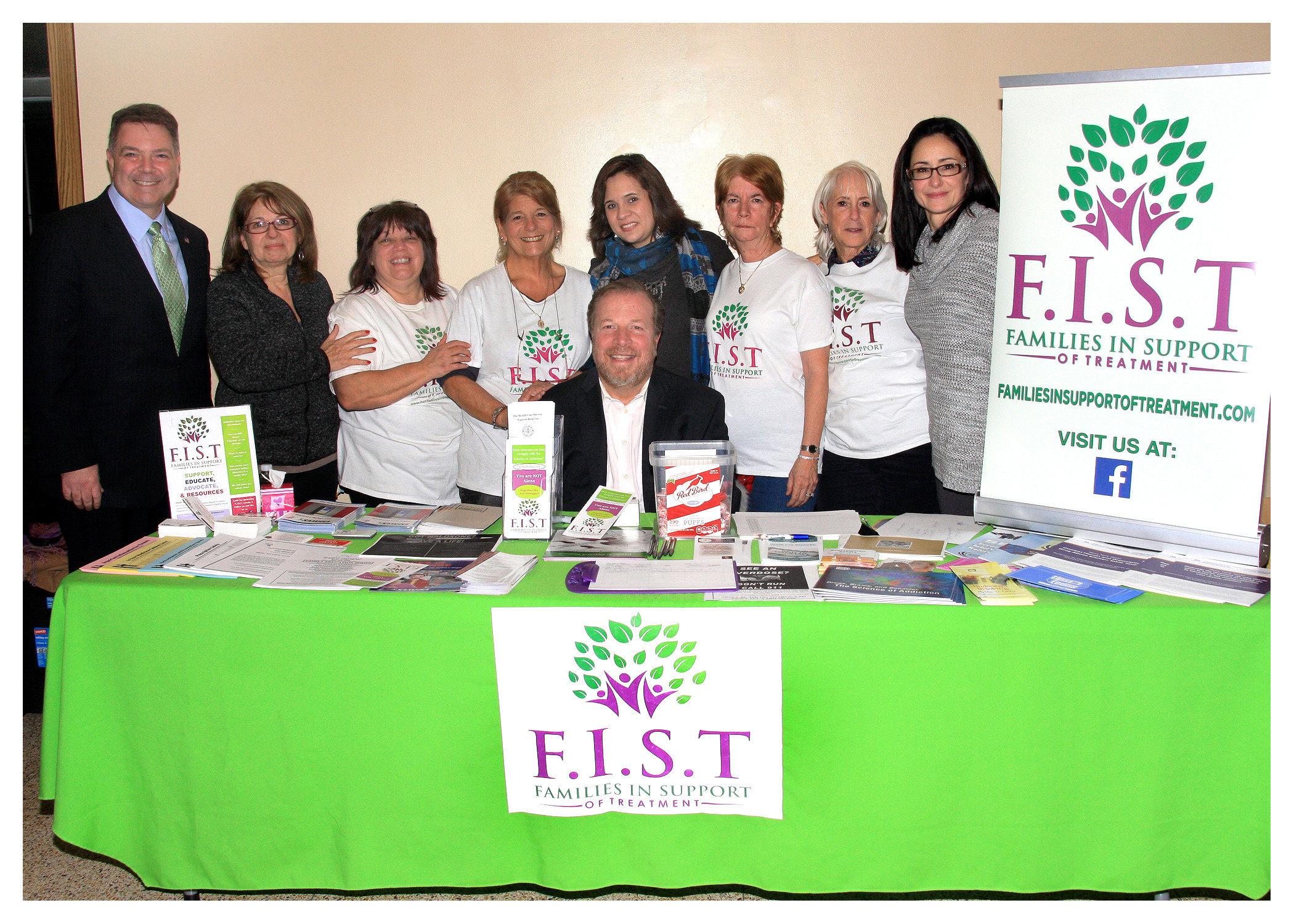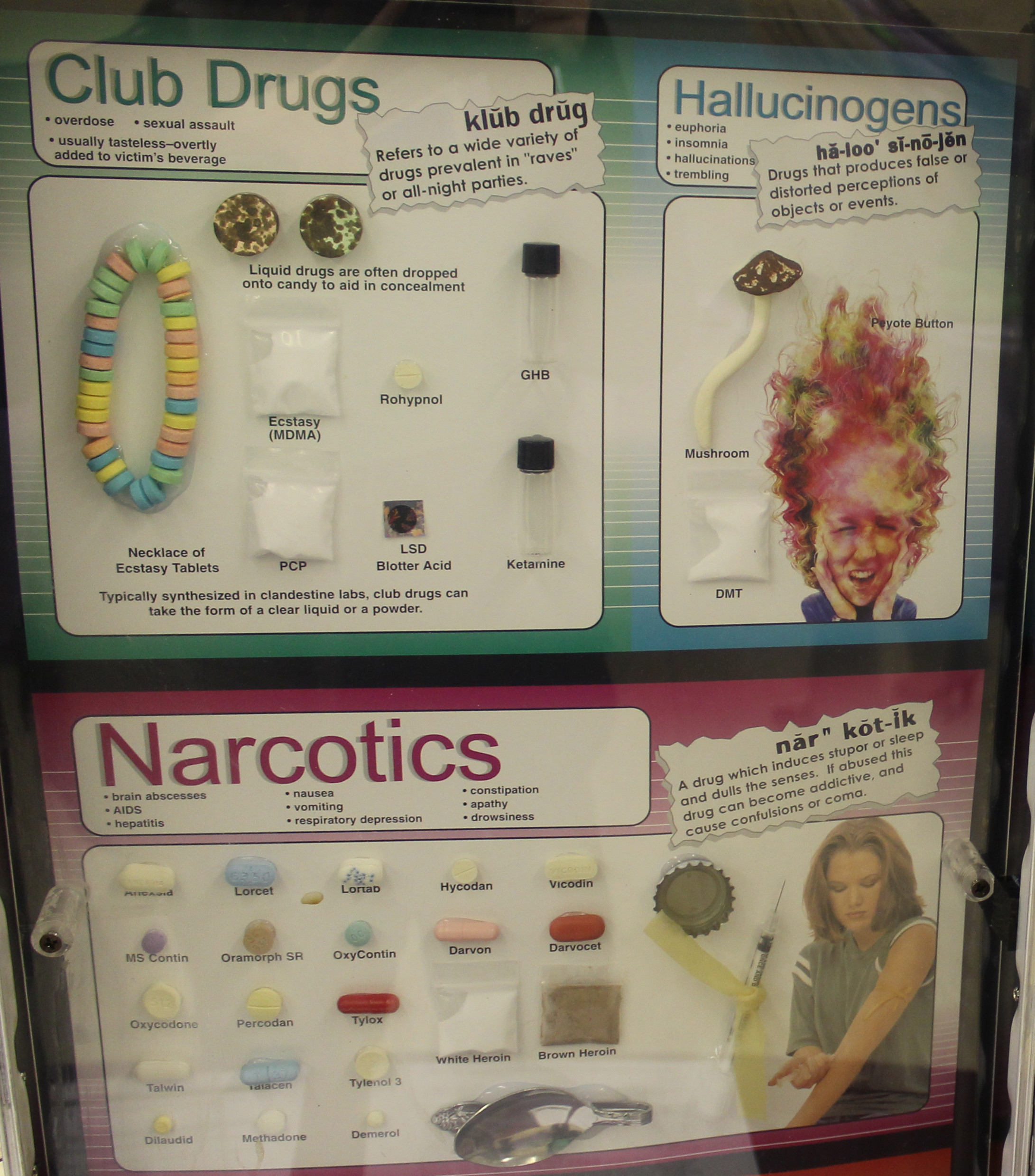Fighting the scourge of drug addiction
Community program fosters dialogue on the opioid epidemic
Tom Goris, of North Merrick, wore a suit to his corporate job every day. He wore a suit to the pharmacy. And he wore a suit to meet his drug dealer.
When he was first prescribed opiates for a back injury, his doctor said, “You’re well dressed, so [you] have nothing to worry about,” and that remark stuck with him for eight years.
“Everyone thought I looked normal,” Goris said. “I thought I looked normal.”
He spoke about his recovery from opioid addiction to more than 100 people during a program titled, “The Impact of Addiction on Youth, Family and Community,” presented at the Brookside School in North Merrick on Jan. 26. The non-profit organization Families in Support of Treatment, the Bellmore Merrick Community Coalition and the Community Parent Center presented the talk, which included a resource fair at which participants could speak with representatives of 30 treatment and recovery programs.
Speakers addressed the crowd on the myriad pitfalls of addiction and how, as communities, people could combat the substance-abuse epidemic.
FIST founder Anthony Rizzuto said that his advocacy work began in 2013 when he lobbied friends to support legislation in Albany that would increase access to treatment. “When a person says they need help, you need to seize that opportunity,” he said. FIST came out of Rizzuto’s work, and was approved as a non-profit organization this past year. Now it focuses on providing support and services to families affected by addiction.
Steve Chassman, executive director of the Long Island Council on Alcohol and Drug Dependence and a Bellmore-Kennedy High School graduate, explained that Nassau County has the fourth highest overdose rate in New York.
He asked audience members to raise their hands if they knew someone in “the throes of a substance-abuse disorder.” Many hands quickly shot up.
“Why is this happening in our fair suburban counties?” Chassman shouted.
On Feb. 28, he will head to Albany to address this question as part of New York State’s Recovery Advocacy Day. LICADD will join with similar organizations to urge the state to increase funding for recovery services, promote addiction-related education programs in schools and improve regulation of sober homes throughout the state.
Next up was Nicole Aretz, of Mattituck. “I’m not gonna sound like these guys,” she said. “I’m just a mom, a mom that was really ignorant to addiction, a mom who was judgmental and believed that it would never happen to me.”
Aretz said that she took her son, Justin, on fishing trips, encouraged him to play sports and expressed her pride when he earned a scholarship to a college in Rhode Island. “I had really felt that I did everything right,” she said.
Aretz noted that the proclivity for addiction is hereditary. When her son’s grades dropped at school, he broke down and told her what was happening in his life. It was the first time Aretz had heard of oxycodone. After many arguments and bouts of denial, Aretz began attending Nar-Anon family group meetings. “I realized that this disease requires me to help me,” she said.
In 2010, Aretz presented Justin with an ultimatum: If he did not pursue treatment, he could not live in her house. Now, at 25, he lives in Florida and has been clean for 20 months.
To follow up Aretz’s story, YES Community Counseling Executive Director Jamie Bogenshutz detailed the signs and symptoms of an addiction disorder. For Aretz, the signal that made her question Justin’s behavior was his poor performance at school. Other signs include changes in appetite, sleep and mood, according to Bogenshutz.
Those who “struggle with the disease of addiction aren’t bad people trying to get good,” Rizzuto, the FIST founder, said. “They’re sick people trying to get well.”
The first step to recovery, according to Rizzuto, is to help addicts accept that they have a problem, perhaps by asking for an intervention or sitting down with a treatment professional. When Rizzuto handles this step, he said, “I don’t even take the pen and paper out. I just sit down with them and have a conversation.”
The next steps involve determining which level of treatment individuals should receive based on how damaging the addiction is to them. For less serious cases, they could visit a facility as an outpatient on their own, and for the most serious, they could check in long term to let their bodies detoxify and their minds heal.
Goris said that his journey toward recovery began when he redirected the determination he had as an addict toward getting well. As an addict, he said, he would use his willpower to conceal his addiction and find a better fix than the last, including even searching Google for places to buy heroin after he ran out of pills while on a business trip.
When Goris started seeking help, he said that he found solace in a support group and developed the strength to stand up to his “addictive voice.” He paused and explained that those battling with compulsions “are the most determined people on the face of the earth. There’s no question about it.”
Goris has been in recovery since Dec. 21, 2013, and has since co-created I Am Not Anonymous, a portrait series detailing stories of several people in recovery.
To close the program, Jeffrey Reynolds, president and chief executive officer of the Family and Children’s Association, said that the community could advocate for accessible recovery services, starting with evidence-based intervention programs in schools across Long Island.
“Not a single event where you take kids into an auditorium and shout at them for an hour,” he said, but smaller groups of students who can have genuine conversations and be told the facts about addiction and substance abuse.
“Not as a scare tactic, but as a means of real education,” he added.

 49.0°,
Mostly Cloudy
49.0°,
Mostly Cloudy 







